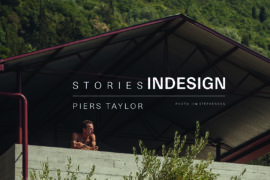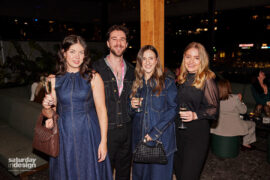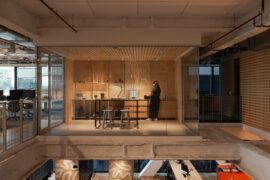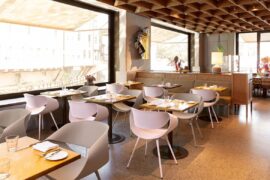Driving The University of Tasmania’s sustainable philosophy, Six Degrees has designed the first purpose-built facility for its School of Fine Furniture.
When The School of Fine Furniture at The University of Tasmania needed a purpose-built educational facility (the first of its kind in Australia when it was completed in 2009), they turned to Six Degrees.
The studio space accommodates 45 students but offers the flexibility for future expansion.
The driving philosophy of the building is centered on the university’s values around environmental sustainability. As the first educational facility of its kind, Six Degrees drew on this core concept to create an interactive learning environment.
The building itself extends sustainability parameters through its carefully considered design.
The design implements several environmental strategies, such as long-span timber structures to minimise the use of non-renewable resources. In addition, long life materials such as plywood, recycled carpet tiles and fibreglass have been incorporated.
The exterior is clad in a translucent sheeting material, which maximises the natural light that filters into the workspace. The outcome is a building that serves a unique purpose for furniture design students, built in a simple form and complemented by simple and durable materials.
Practice Team
Director: Peter Malatt, Simon O’Brien
Project Leader: Six Degrees and SBE in collaboration
Architects: Dan Demant, Giles Freeman, Alan Ting, Sian Murray, Chris Begert and Sean McArdle
Documentation: As above
Interior Design: Robyn Ho
Consultant Team: Services Engineering Solutions, Tasmania
Building Surveyor: Greg Green Protek
Structural: George Apted & Assoc.
Heritage: Six Degrees
ESD: Sustainable Built Environments
Photography: Patrick Rodriguez
Indesign #73, the education issue, is hitting subscribers now. Look out for original stories that will continue the theme on Indesignlive.com.
INDESIGN is on instagram
Follow @indesignlive
A searchable and comprehensive guide for specifying leading products and their suppliers
Keep up to date with the latest and greatest from our industry BFF's!

The undeniable thread connecting Herman Miller and Knoll’s design legacies across the decades now finds its profound physical embodiment at MillerKnoll’s new Design Yard Archives.

London-based design duo Raw Edges have joined forces with Established & Sons and Tongue & Groove to introduce Wall to Wall – a hand-stained, “living collection” that transforms parquet flooring into a canvas of colour, pattern, and possibility.

Piers Taylor joins Timothy Alouani-Roby at The Commons to discuss overlaps with Glenn Murcutt and Francis Kéré, his renowned ‘Studio in the Woods,’ and the sheer desire to make things with whatever might be at hand.

On 6th September 2025, Saturday Indesign went out with a bang at The Albion Rooftop in Melbourne. Sponsored by ABI Interiors, Woodcut and Signorino, the Afterparty was the perfect finale to a day of design, connection and creativity.
The internet never sleeps! Here's the stuff you might have missed

The Arup Workplace in Perth/Boorloo, designed by Hames Sharley with Arup and Peter Farmer Designs, has been awarded The Work Space at the INDE.Awards 2025. Recognised for its regenerative design, cultural authenticity, and commitment to sustainability, the project sets a new benchmark for workplace architecture in the Indo–Pacific region.

We think of the chair as a ubiquitous object but every now and then there is a design that ticks all the boxes and makes its presence felt on the global stage.

London-based design duo Raw Edges have joined forces with Established & Sons and Tongue & Groove to introduce Wall to Wall – a hand-stained, “living collection” that transforms parquet flooring into a canvas of colour, pattern, and possibility.